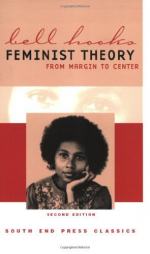
|
| Name: _________________________ | Period: ___________________ |
This test consists of 5 multiple choice questions, 5 short answer questions, and 10 short essay questions.
Multiple Choice Questions
1. According to the author's Preface (2000), where is visionary feminist discourse increasingly talked about?
(a) Inside factories and in union meeting halls.
(b) In the corridors of the educated elite.
(c) In university sororities.
(d) In beauty parlors.
2. In the Preface to the first edition (1984), what general theme does the author present?
(a) Her mother's life story.
(b) The central theory of her work.
(c) A history of the feminist movement.
(d) Her ideas about high school education for girls.
3. According to the author, what does society often teach women about what it means to be a woman?
(a) That to be female is to be important.
(b) That to be female is to be a victim.
(c) That women should be silent.
(d) That to be a woman is easier than being a man.
4. What is the author's contention about the feelings that defined sisterhood?
(a) She thinks they have a lot to do with insecurity around men.
(b) She suggests that they support sexist, patriarchal attitudes towards women.
(c) She finds them to be unjustified.
(d) Actually, she does not see anything wrong with them.
5. According to the author, in Chapter 1, "Black Women - Shaping Feminist Theory," what were black feminists initially trying to do in the feminist movement?
(a) Be more like white feminists.
(b) Make new friends.
(c) To expand the basis of feminist thought.
(d) To get more work.
Short Answer Questions
1. As stated in the 1984 Preface, what is the primary weakness of feminist theory that the author promises to address in her book?
2. How does the author view the concept of personal freedom?
3. What major difference between white and black men does the author point out?
4. The author expresses how feminism reacts to "a political system of imperialist, white supremacist, capitalist patriarchy;" how does she view the state of our society today?
5. Were there ever alternate reactions to black women's efforts to participate in the early feminist movement, and if so what were they?
Short Essay Questions
1. In the author's view, are feminists ambivalent about power?
2. Describe the author's discussion of early feminist attitudes towards men.
3. Why does the author want to change feminist language from "I am a feminist" to "I advocate feminism"?
4. Describe the author's views of how modern western cultures deal with the process of change.
5. Describe the kind of power that the author sees in communities of economically disadvantaged women.
6. Which two kinds of power does the author discuss in Chapter Six, "Changing Perspectives on Power"?
7. What was the experience of many non-white and lower class women working outside the home?
8. What can alternative models of power accomplish, according to the author?
9. Why is educating women a "feminist agenda," as the title to Chapter Eight suggests?
10. In chapter Nine, "Feminist Movement to End Violence," how does the author describe the patriarchal perspective on gender.
|
This section contains 975 words (approx. 4 pages at 300 words per page) |

|




